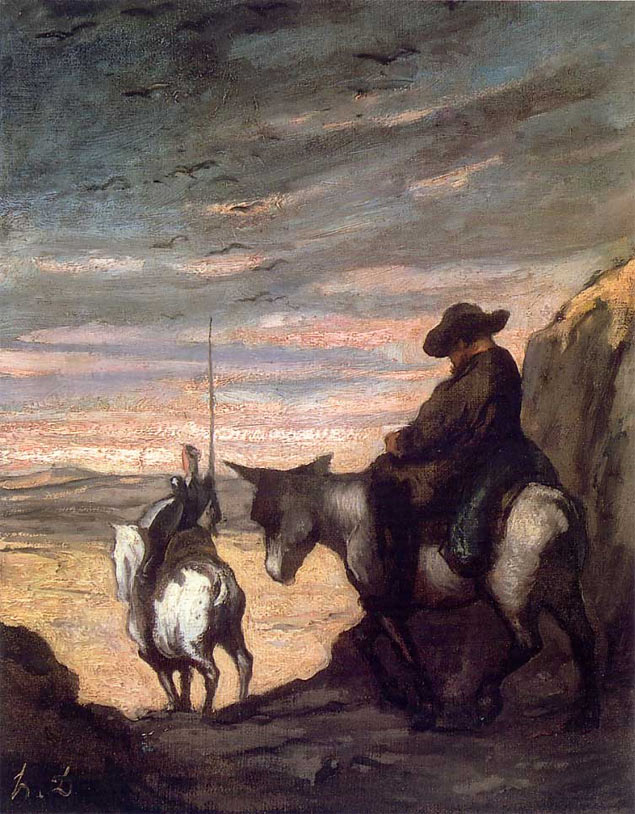Sunday, November 8, 2009
My vision

Honore Daumier, Don Quixote and Sancho Panza - c. 1866-68 Oil on canvas 40.2 x 33 cm
The Armand Hammer Museum of Art and Cultural Center, Los Angeles
The Armand Hammer Museum of Art and Cultural Center, Los Angeles
I propose here to you some free remarks on my way of viewing the 3D models
 |
| For me a model is an object of art: the token chosen (the church, the building,...) must like a lot to me because I bring in the idea of playing - if I do not like it, I don't even start the implementation In order taht I can complete and publish the model, it must succeed me as I had in mind from the start, and if at some point it doesn't convince me more, I throw it away and switch to another - and I can say I've got three or four, including important buildings, which I started and not completed for this reason |
  |
| In my vision a model 'perfect' is not necessarily a model 'quite realistic', like a photograph taken by by an eager tourist , but I want (I would) go a bit longer there - just like painters - I'd try to capture the essence of that building, that church, that air that goes around. I do not like too the wholly architectural models with all the details rendered with the geometry and no textures, such as reconstruction of the ancient temples, although I must admit that they hard to do, and that they can be very pleasant, if made workmanlike; I like to see these models when they have a great cultural and historical interest, but I would never started to make this type of models - even if I made "La Rotonda" by Palladio, but I tried to clothe it with its old a bit worn plaster... |
  |
| I can not stand the repetitive textures that are used to doing certain floors or lawns, or some unfinished walls; if you really have to use them, at least they must fit together perfectly, without 'cuts' betweens tiles! I didn't consider and vote many beautiful models because of this peculiarity that I judge a big flaw: in nature there is nothing, at least at the macroscopic level, which is repeated in exactly the same way without little - but appreciable - differences! All the texture of a model must be clearly agreed between themselves, regarding colors, tones, grain... Speaking of textures: there are particular points in a model where either the textures are chosen and applied 'perfectly' or it is better to put a simple flat color or a texture very 'generic'... choosing the "lesser evil": and these points tipically are the tips of the towers, the roofs of the apses, domes etc. To end with the textures: the quality of texture is equally important for me than the quality of architecture; and unfortunately obtaining a good texture is time consuming and requires also an in-depth knowledge of a graphical tool; indeed it is almost never possible to have (or even take) photographs which don't require adjustments of color, lights, texture, removal or addition of parts...; in many of my models I have devoted most of my time and attention to textures but not the architecture! |
 |
There would be many considerations to be done, good and bad examples to show...
but it will be for another time!

from The History of Don Quixote de la Mancha, 1922 London, Constable & Co. (see Greetings)
but it will be for another time!

from The History of Don Quixote de la Mancha, 1922 London, Constable & Co. (see Greetings)
.
